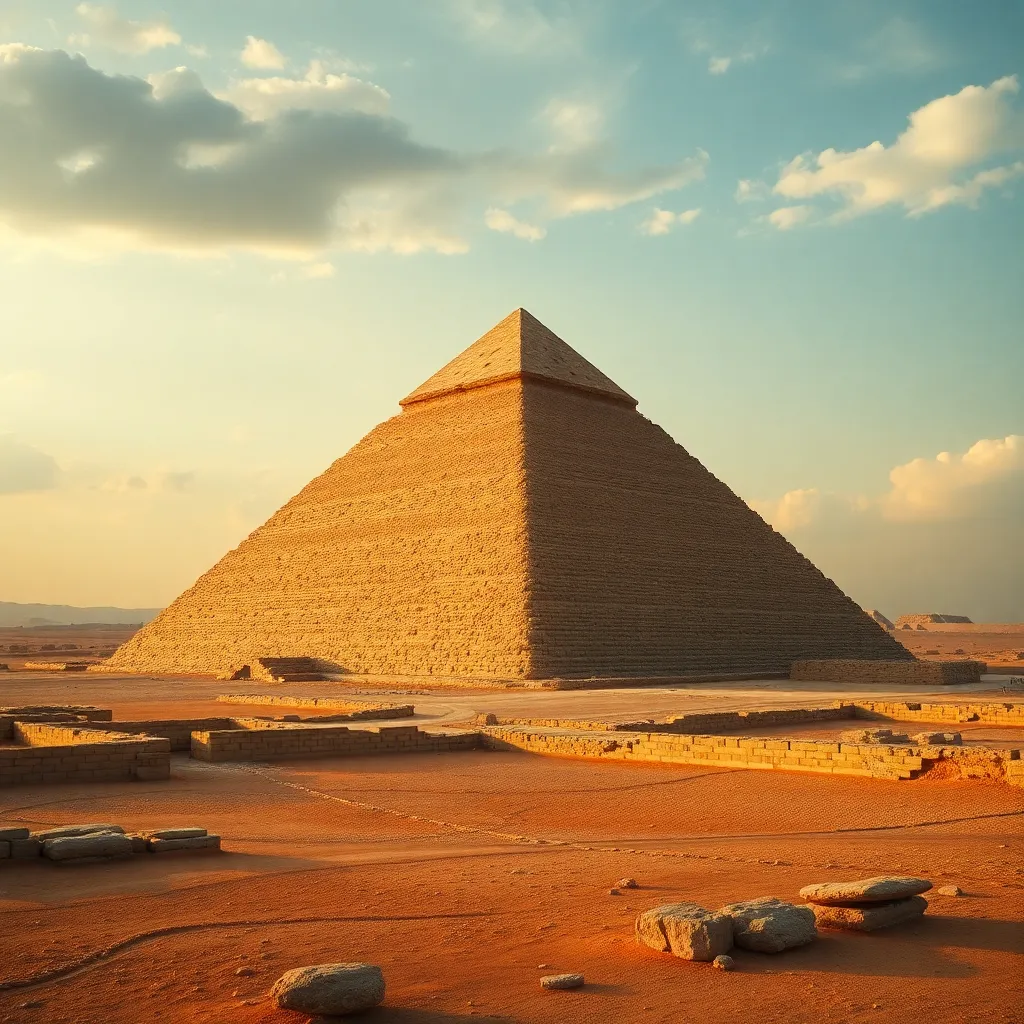The Pyramid of Khufu: The Heart of the Giza Plateau
I. Introduction
The Giza Plateau is one of the most significant archaeological sites in the world, home to some of the most iconic structures of ancient Egypt. Among these, the Pyramid of Khufu, also known as the Great Pyramid, stands as a testament to the architectural and cultural achievements of the ancient Egyptians. This article aims to explore the historical context, architectural marvel, theories of construction, preservation efforts, and cultural impact of the Pyramid of Khufu, highlighting its enduring significance.
II. Historical Context
A. The Fourth Dynasty of the Old Kingdom
The Fourth Dynasty of the Old Kingdom of Egypt (c. 2613–2494 BCE) is known for its remarkable achievements in art, architecture, and state organization. This period marked the height of pyramid construction, with the Great Pyramid being the most notable example.
B. Khufu’s reign and achievements
Khufu, also known by his Greek name Cheops, reigned during this dynasty and is credited with the commissioning of the Great Pyramid. His reign is often associated with the consolidation of power and the centralization of the state.
C. The cultural significance of pyramid construction
Pyramids served as monumental tombs for pharaohs, reflecting their divine status and the belief in the afterlife. The construction of these grand structures was not only a display of power but also a religious endeavor intended to ensure the pharaoh’s immortality.
III. Architectural Marvel
A. Design and dimensions of the Pyramid of Khufu
The Pyramid of Khufu is the largest of the three pyramids on the Giza Plateau, originally standing at 146.6 meters (481 feet) and covering an area of approximately 13 acres. Its base measures about 230.4 meters (756 feet) on each side, making it an impressive feat of engineering.
B. Construction techniques and materials used
The pyramid was constructed using an estimated 2.3 million blocks of stone, primarily limestone and granite. The precise techniques employed remain a subject of debate, but it is believed that ramps and levers were used to position the massive stones.
C. Innovations in pyramid architecture
The Pyramid of Khufu introduced several architectural innovations, including:
- Complex internal chambers and passageways.
- Use of corbel arches in the burial chamber.
- Alignment with cardinal points, showcasing advanced knowledge of astronomy.
IV. The Pyramid Complex
A. Surrounding structures and their purposes
The Pyramid of Khufu is part of a larger complex that includes smaller pyramids for queens, mortuary temples, and a causeway leading to the Nile. These structures were integral to the funerary practices and rituals of the time.
B. The Sphinx and its relationship to the pyramid
The Great Sphinx of Giza, with the body of a lion and the head of a pharaoh, is located near the pyramid. It is believed to have been constructed during Khufu’s reign and symbolizes strength and protection over the pyramid complex.
C. Burial practices and religious beliefs associated with the site
The burial practices of ancient Egyptians involved elaborate rituals, including mummification and the inclusion of grave goods. The pyramid served as a focal point for these practices, believed to facilitate the pharaoh’s journey to the afterlife.
V. Theories of Construction
A. Various theories on how the pyramid was built
Numerous theories have been proposed regarding the construction of the Pyramid of Khufu, including the use of ramps, levers, and counterweights. Some suggest a straight ramp, while others propose a circular or zigzagging ramp.
B. Labor force: skilled workers vs. slaves
Contrary to popular belief, it is widely accepted that the labor force consisted of skilled workers who were well-fed and organized into teams, rather than slaves. These workers were likely motivated by national pride and religious duty.
C. Role of astronomy and mathematics in construction
The construction of the pyramid required advanced knowledge of mathematics and astronomy. The Egyptians used a calendar based on the lunar cycle and aligned the pyramid with the stars, reflecting their understanding of the cosmos.
VI. Preservation and Archaeological Discoveries
A. Efforts to preserve the Pyramid of Khufu
Preservation efforts for the Pyramid of Khufu have included restoration projects and the establishment of protected areas to prevent damage from tourism and environmental factors. Ongoing research aims to monitor the structural integrity of the pyramid.
B. Major archaeological findings and their implications
Archaeological discoveries surrounding the pyramid have provided insights into ancient Egyptian society, including tools, burial goods, and inscriptions. These findings have reshaped our understanding of the social and political landscape of the time.
C. Recent technologies used in exploration
Recent advancements in technology, such as infrared thermography and 3D scanning, have allowed researchers to explore the pyramid’s interior without causing damage. These methods have revealed hidden chambers and provided new data for study.
VII. Cultural Impact and Legacy
A. The pyramid in ancient Egyptian society
In ancient Egyptian society, the Pyramid of Khufu served as a powerful symbol of the pharaoh’s divine authority and the civilization’s architectural prowess. It was a focal point for religious practices and a testament to the skills of its builders.
B. Influence on later architectural endeavors
The Great Pyramid has influenced countless architectural projects throughout history, inspiring the design of subsequent pyramids and monumental structures in various cultures around the world.
C. The Pyramid of Khufu in modern culture and tourism
Today, the Pyramid of Khufu attracts millions of tourists each year, serving as a symbol of ancient Egypt’s grandeur. It has been featured in various films, literature, and popular culture, cementing its status as one of the Seven Wonders of the Ancient World.
VIII. Conclusion
In summary, the Pyramid of Khufu stands as a remarkable achievement of ancient Egyptian civilization, reflecting the artistry, engineering, and religious beliefs of its time. Its enduring mystery and fascination continue to captivate people around the world. The Great Pyramid not only serves as a tomb for a pharaoh but also as a symbol of the rich history and cultural heritage of ancient Egypt, a legacy that remains relevant and revered to this day.




